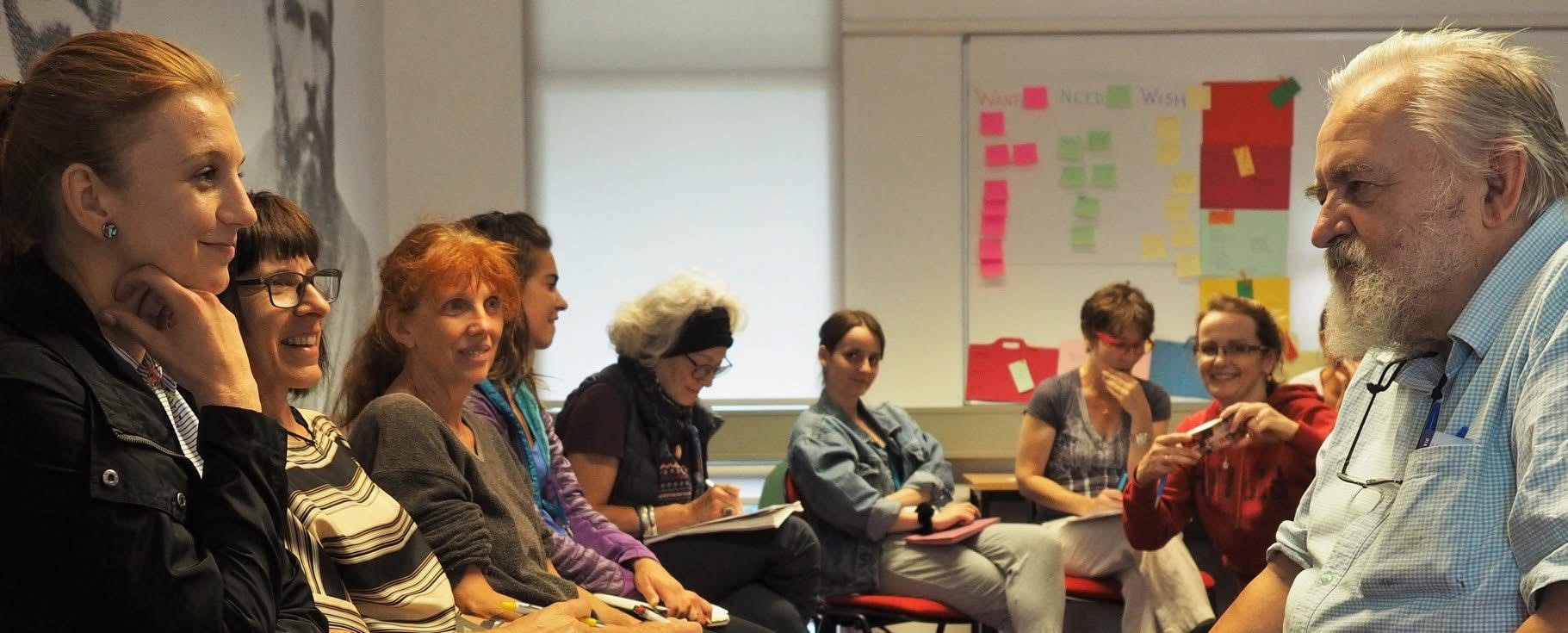The Pumpkin – It’s Halloween Soon
Part one: Story pathway
A story pathway is a list of words or phrases presented in the same order as they appear in the story. Here is an example:
- warming my skin
- without warning
- dragging me from my dreams
- into a wheeled box
- my kin remained silent
- to fade in the distance
- everything went dark
- on hard grey earth
- with large kitchen knives
- a giant hole in my head
- like ribbons from a gift
- in shock
- a face in my side
- a stick of hot fire in my belly
I would start by writing this story pathway on the board and asking students to copy it into their notebooks.
At this stage, the story pathway has two main functions:
1. It provides students with a sort of linguistic map – an outline of where they will go when they hear the story.
2. It allows us to isolate and present higher-level vocabulary before students hear the story. In this case, nearly all of the B2-level words from the story text are shown in bold. (You can check students familiarity with these words and clarify as necessary – 'kin' will be of particular importance.)
What we are doing is simple – we are setting up students for comprehension of the story text which is coming soon.
Part two: Prediction
Tell students that the phrases on the board are from a story. Ask students to suggest what kind of story it might be. Ask them to give reasons for their answers.
The various macabre words and phrases might suggest that we are dealing with a horror story. The fact that it is almost Halloween would reinforce that!
Part three: The story
Get ready to read the story to your students. Warn students that although it may sound quite horrific, they will later realize that it isn't quite as bad as it seems.
As you read the story, you can refer to the story pathway on the board each time you mention the phrases. (These are shown in bold below):
Halloween horror story
In the beginning, my life was peaceful
Days spent with my family in the garden
The sunlight warming my skin
Peaceful
And then one day, they came without warning
Cruel hands dragging me from my dreams
They put me into a wheeled box
They carried me past my brothers and sisters, my friends and family
I cried for help but my kin remained silent
My home began to fade in the distance
And suddenly everything went dark
Ask students to suggest whose story this is. You can also ask them to suggest what the following phrases refer to:
- a wheeled box
- hard grey earth
- a stick of hot fire
- a face in my side
Part five: Repetition
Repeat the story and after each telling, invite students to reconsider their answers in part 4 (above).
You can also erase select phrases from the story pathway on the board. Then, when you retell the story, pause and invite students to finish your sentences from memory.
Part six: The video
Introduce students to the poor protagonist of the story – an unfortunate pumpkin.
Click here to watch the video online
“The Life and Death of a Pumpkin” was directed by Aaron Yonda and won the Best Short Film and Best Concept awards at the 2006 Chicago Horror Film Festival. Voice actor Matt Sloan provides a great voiceover for the pumpkin.
Find out what your students think of the short film.
Part seven: Revisiting the text
Give out copies of the story text in part three. Now that students have seen the video, they will be able to create a new level of meaning from it.
Ask students to underline 8 words or phrases in the text that they would like to take away with them. Once they have done this, ask students to compare their choices. (Note that this is an alternative to the norm in which the teacher decides what language in a text the students should focus on.)
[Optional: You could also get students to retell the story using the story pathway as a prompt.]
Part eight: Stories from students
Ask students to write their own horror stories based on the lives and deaths of food items or everyday objects. They could choose to talk about strawberries being made into jam, a golf ball being hit by a golf club, or a dog’s toy being chewed to death. Students should write in the first person. Later, invite students to share their stories and have others guess what the mystery objects or food items are.
Please check the Pilgrims courses at Pilgrims website.
The Pumpkin – It’s Halloween Soon
Jamie Keddie, SpainAn Online Lesson: Conflict and Resolution
Andrea Záhumenská, SlovakiaThe Use of TV Game Shows in the Classroom
Viktória Gergelyová, Slovakia
